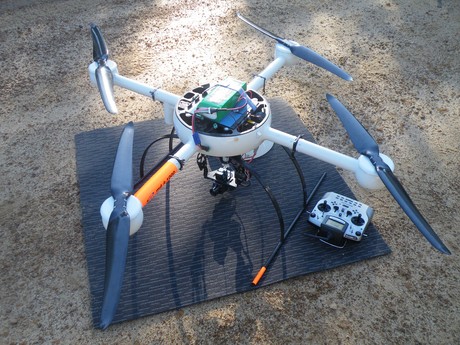Thermal sensors and drones to detect feral pigs

WA researchers are using thermal sensors attached to aircraft and drones to detect feral pigs, as part of a trial aimed at strengthening management of the significant pest animals.
The project, led by the Department of Agriculture and Food (DAFWA) and funded through the national Control Tools and Technologies for Established Pest Animals and Weeds Program, will evaluate methods to quantify feral pig populations using aerially deployed thermal sensors. It is being delivered in partnership with Murdoch University and the WA Department of Parks and Wildlife.
DAFWA development officer and Murdoch researcher Dr Peter Adams said feral pigs significantly impact on agricultural productivity and environmental resources, costing the Australian economy in excess of $106 million per annum in production losses and management costs.
“Effective management of feral pigs requires accurate methods of assessing population or density changes in response to control measures or environmental changes,” Dr Adams said.
“Populations of feral pigs typically occur in remote areas and they favour dense or impenetrable habitats that are difficult to access and therefore monitor.
“Aerial surveys can overcome difficulties in accessing these habitats; however, the cryptic behaviour of feral pigs can still reduce the ability to detect them.
“Using thermal sensors on aerial platforms such as remotely piloted aircraft (RPA) or drones can significantly improve detection and reduce operational costs, enabling more effective assessment of feral pig populations.”
Dr Adams said aerial operations of many types, including helicopters, are traditionally complicated and expensive, and therefore out of reach for community-led groups. By evaluating lower cost thermal sensors coupled with RPAs, the project provides “a cheaper monitoring approach which provides comparable accuracy and information”, he said.
“We will undertake a cost-benefit analysis comparing the use of drones with traditional monitoring techniques such as aerial observation, remote camera trapping and monitoring impacts.
“A monitoring tool will be developed which will be able to evaluate the success of feral pig control programs, as well as identifying existing population densities and detecting increases in abundance or range expansions.
“This initiative will assist our farmers and land managers with staying on the front foot in the fight against pest animals to limit the impact they can have on our land, produce and industries.”
AI-powered wearable turns gestures into robot commands
A new wearable system uses stretchable electronics and artificial intelligence to interpret human...
Graphene-based solar cells power temperature sensors
Researchers have demonstrated the ultra-low-power temperature sensors powered by graphene-based...
3D-printed diamond device powers medical implants
Researchers from RMIT University have developed a 3D-printed diamond–titanium device that...





